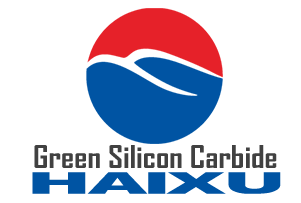1. Why Green Silicon Carbide (GC) is the Right Abrasive
High Hardness: GC has a Mohs hardness of about 9.2-9.5, which is higher than alumina ceramic (approx. Mohs 9). This allows it to efficiently cut and remove material without dulling quickly. Sharp and Brittle Crystals: GC crystals are very sharp and brittle. As they wear, they fracture to reveal new, sharp edges. This “self-sharpening” property maintains a consistent cutting rate. Excellent for Hard, Brittle Materials: It is specifically recommended for materials with high hardness and low tensile strength, such as ceramics, glass, and cemented carbides.
2. Understanding the Grit Size: 220#
Grit Size: 220# is a medium-coarse grit. Particle Size: The average particle diameter is approximately 50-63 microns. Application Stage: This grit is not used for finishing. It is ideal for: Rough Grinding: Rapidly removing significant amounts of material, leveling surfaces, or trimming parts to size. Semi-Finishing: It is used aftera coarser grit (like 80# or 120#) and beforea finer grit (like 400# or 800#). Its job is to remove the deeper scratches left by the previous, coarser grit, creating a more uniform surface for the next, finer step.
3. Typical Application Methods
Loose Abrasive Grains: Used in lapping machines or vibratory finishers mixed with water or coolant to grind a large batch of parts simultaneously (e.g., for deburring and edge rounding). Bonded Abrasives (Grinding Wheels): The most common form. The grains are bonded together with vitrified (glass-based) or resin bonds to create wheels for surface grinders or cutting-off machines. Coated Abrasives (Sandpaper/Flap Discs): Used on handheld tools or backstand grinders for shaping and smoothing.
4. Key Recommendations and Precautions
Coolant is CRITICAL: Always use a copious amount of coolant (preferably a water-soluble coolant) when grinding alumina ceramics. This serves three vital purposes: Heat Dissipation: Prevents thermal shock, which can cause micro-cracks in the ceramic. Washing Away Swarf: Removes grinding debris (swarf) from the cutting zone to prevent loading (clogging) of the grinding wheel. Improving Efficiency: Results in a better surface finish and extends the life of the grinding wheel.
Follow a Proper Grit Sequence: For a good surface finish, you must progress through a sequence of grits. Jumping directly from a very coarse grit to a very fine one will not work, as the deep scratches from the coarse grit cannot be removed. Example Sequence: 120# (Rough) → 220# (Intermediate) → 400# (Semi-Finish) → 800# (Finish) → Polishing.
Dust Control: Grinding produces fine dust. Use appropriate local exhaust ventilation or dust collection systems, and operators should wear respiratory protection.

